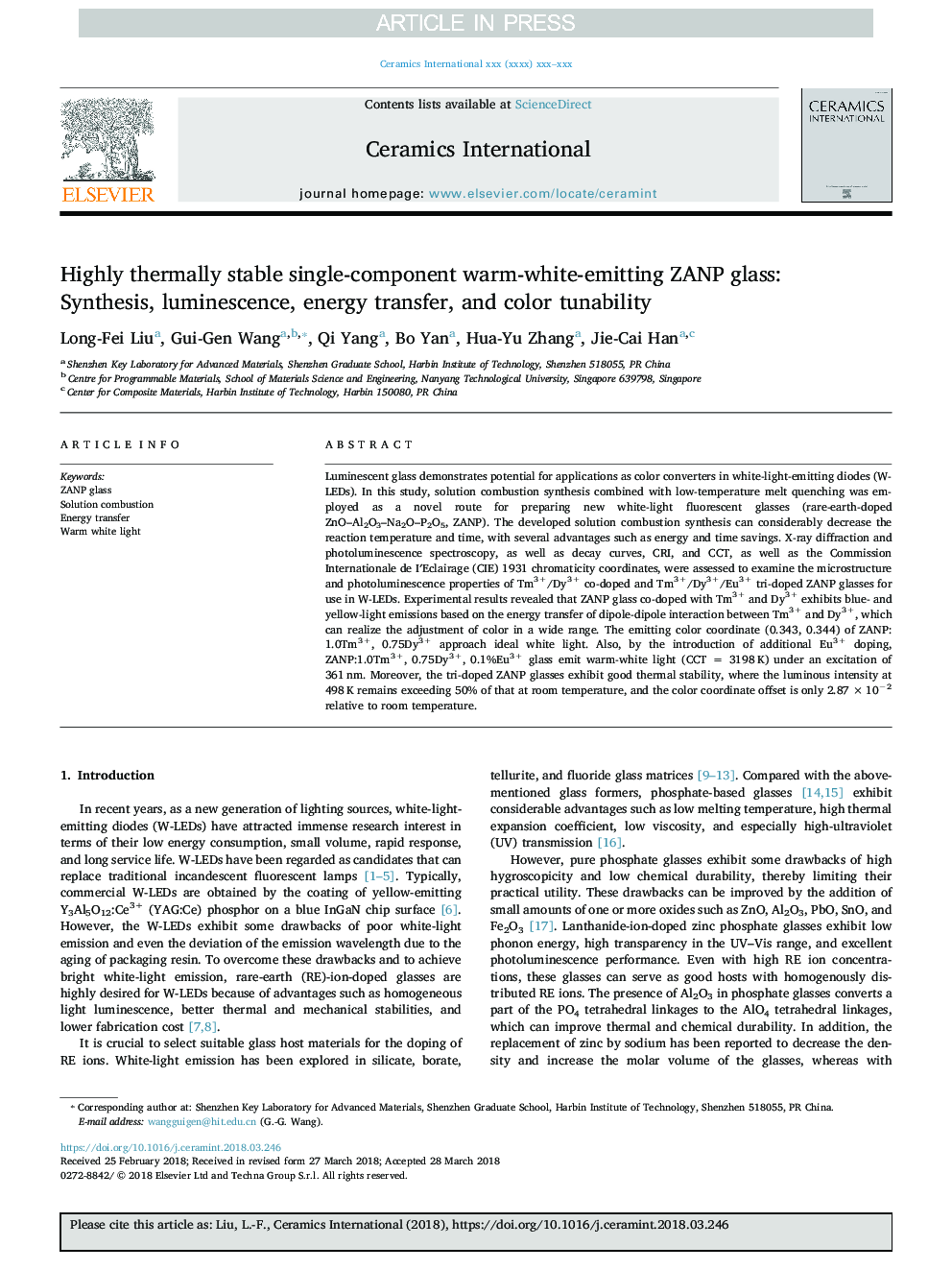| کد مقاله | کد نشریه | سال انتشار | مقاله انگلیسی | نسخه تمام متن |
|---|---|---|---|---|
| 7887240 | 1509788 | 2018 | 9 صفحه PDF | دانلود رایگان |
عنوان انگلیسی مقاله ISI
Highly thermally stable single-component warm-white-emitting ZANP glass: Synthesis, luminescence, energy transfer, and color tunability
دانلود مقاله + سفارش ترجمه
دانلود مقاله ISI انگلیسی
رایگان برای ایرانیان
کلمات کلیدی
موضوعات مرتبط
مهندسی و علوم پایه
مهندسی مواد
سرامیک و کامپوزیت
پیش نمایش صفحه اول مقاله

چکیده انگلیسی
Luminescent glass demonstrates potential for applications as color converters in white-light-emitting diodes (W-LEDs). In this study, solution combustion synthesis combined with low-temperature melt quenching was employed as a novel route for preparing new white-light fluorescent glasses (rare-earth-doped ZnO-Al2O3-Na2O-P2O5, ZANP). The developed solution combustion synthesis can considerably decrease the reaction temperature and time, with several advantages such as energy and time savings. X-ray diffraction and photoluminescence spectroscopy, as well as decay curves, CRI, and CCT, as well as the Commission Internationale de Iâ²Eclairage (CIE) 1931 chromaticity coordinates, were assessed to examine the microstructure and photoluminescence properties of Tm3+/Dy3+ co-doped and Tm3+/Dy3+/Eu3+ tri-doped ZANP glasses for use in W-LEDs. Experimental results revealed that ZANP glass co-doped with Tm3+ and Dy3+ exhibits blue- and yellow-light emissions based on the energy transfer of dipole-dipole interaction between Tm3+ and Dy3+, which can realize the adjustment of color in a wide range. The emitting color coordinate (0.343, 0.344) of ZANP: 1.0Tm3+, 0.75Dy3+ approach ideal white light. Also, by the introduction of additional Eu3+ doping, ZANP:1.0Tm3+, 0.75Dy3+, 0.1%Eu3+ glass emit warm-white light (CCT = 3198â¯K) under an excitation of 361â¯nm. Moreover, the tri-doped ZANP glasses exhibit good thermal stability, where the luminous intensity at 498â¯K remains exceeding 50% of that at room temperature, and the color coordinate offset is only 2.87â¯Ãâ¯10â2 relative to room temperature.
ناشر
Database: Elsevier - ScienceDirect (ساینس دایرکت)
Journal: Ceramics International - Volume 44, Issue 10, July 2018, Pages 11693-11701
Journal: Ceramics International - Volume 44, Issue 10, July 2018, Pages 11693-11701
نویسندگان
Long-Fei Liu, Gui-Gen Wang, Qi Yang, Bo Yan, Hua-Yu Zhang, Jie-Cai Han,